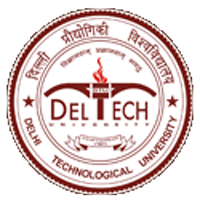Please use this identifier to cite or link to this item:
http://dspace.dtu.ac.in:8080/jspui/handle/repository/22269Full metadata record
| DC Field | Value | Language |
|---|---|---|
| dc.contributor.author | JHA, ANKUSH | - |
| dc.date.accessioned | 2025-11-07T05:46:58Z | - |
| dc.date.available | 2025-11-07T05:46:58Z | - |
| dc.date.issued | 2025-05 | - |
| dc.identifier.uri | http://dspace.dtu.ac.in:8080/jspui/handle/repository/22269 | - |
| dc.description.abstract | Electric vehicles(EV’s) are becoming popular to achieve goals of sustainable transportation development and rising concerns about climate change and the diminishing nature of fossil fuels. The battery charging system is a crucial component of electric vehicles and has attracted a lot of research interest, particularly in relation to vehicle-to-grid (V2G) power transfer. The primary objectives of vehicle to grid (V2G) are to assist the grid in reaching peak load levelling. This project aims to design , develop and analyse single-phase on-board charger with improved power factor & efficiency as compared to that of conventional EV chargers. A multi-stage power conversion architecture (AC-DC-AC-DC) is adopted for Grid to vehicles power transfer . The Interleaved Power Factor Correction (PFC) front-end converter provides dc to dc conversion with power factor close to unity. which significantly reduces grid harmonics to less than 5% Total Harmonic Distortion (THD). This approach offers higher efficiency compared to traditional bridge rectifiers and ensures compliance with grid power quality standards. Further, a Dual Active Bridge (DAB) stage involves an intermediate AC conversion through a high- frequency transformer, which is crucial because direct DC-DC conversion for a battery level voltage would be highly inefficient. Additionally, this stage provides galvanic isolation(Due to transformer), which is vital for protecting both the battery and the user from potential electrical hazards. This multi-stage conversion process ensures optimal performance, safety, and adherence to regulatory standards in the charging system for specially three-wheeler electric vehicles. | en_US |
| dc.language.iso | en | en_US |
| dc.relation.ispartofseries | TD-8255; | - |
| dc.subject | POWER FACTOR CORRECTION | en_US |
| dc.subject | INTERLEAVED BOOST CONVERTER | en_US |
| dc.subject | ELECTRIC VEHICLE | en_US |
| dc.subject | BATTERY CHARGING | en_US |
| dc.title | POWER FACTOR CORRECTION IN ELECTRIC VEHICLE BATTERY CHARGING USING INTERLEAVED BOOST CONVERTER | en_US |
| dc.type | Thesis | en_US |
| Appears in Collections: | M.E./M.Tech. Electrical Engineering | |
Files in This Item:
| File | Description | Size | Format | |
|---|---|---|---|---|
| ANKUSH JHA M.Tech.pdf | 2.43 MB | Adobe PDF | View/Open |
Items in DSpace are protected by copyright, with all rights reserved, unless otherwise indicated.



